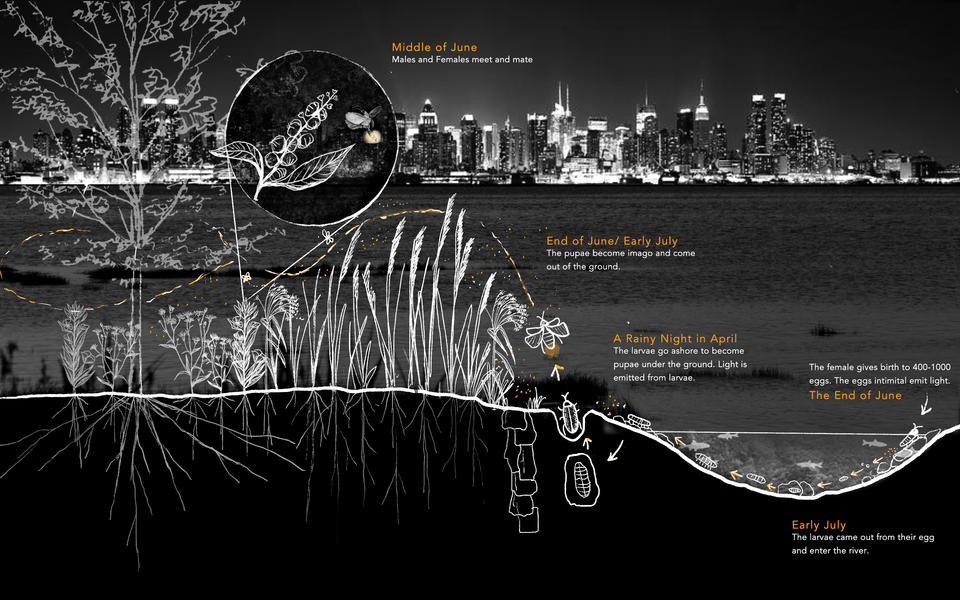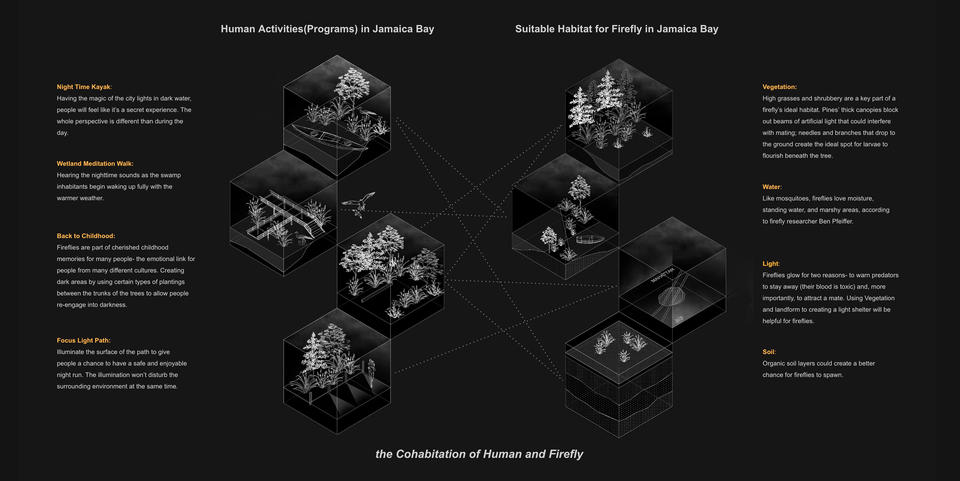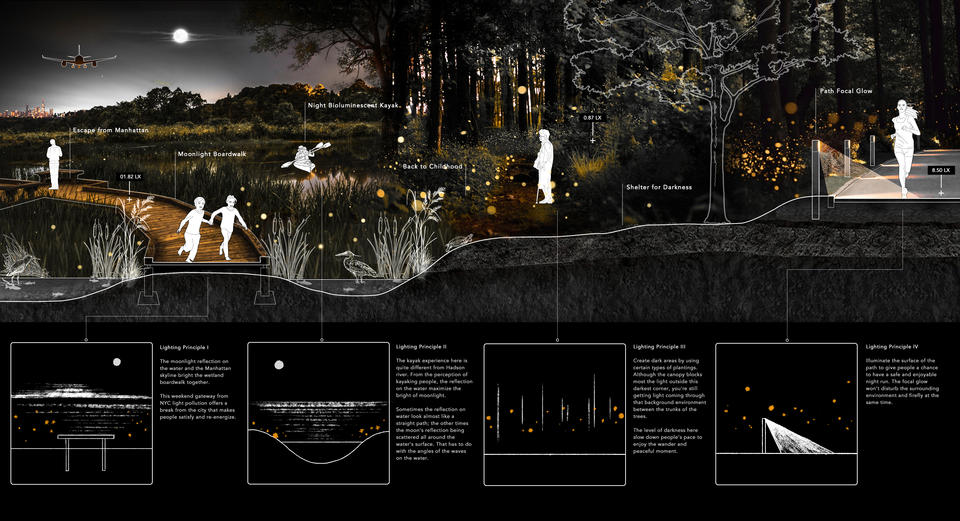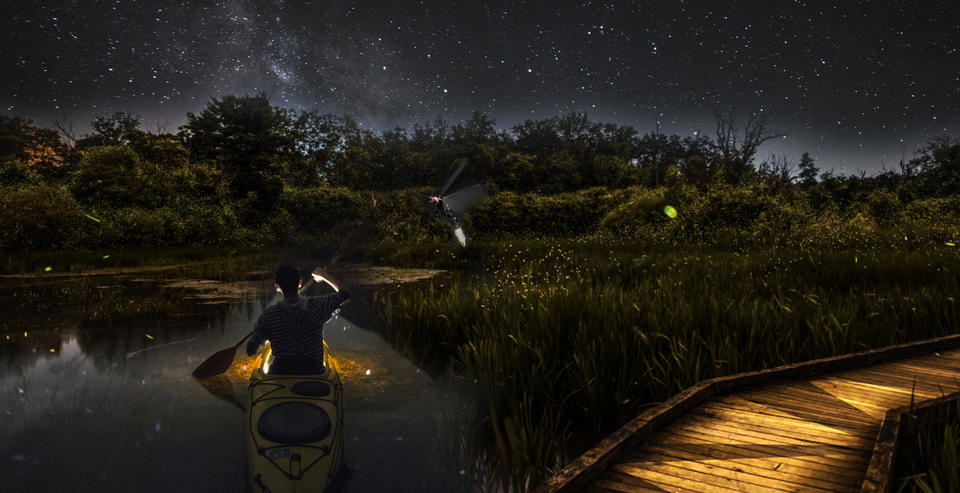Shirley Hui
Darkness Matter
Night is 50% of the planetary experience. Nighttime visible illumination is strongly tied to progress, human activities and urban structure. As our cities become brighter, they bring huge impacts on ecology and human perception.
Darkness is still something worth pursuing in urban nightscapes. This thesis explores the potential of using darkness as the starting point for designing public spaces for use at night, and focuses on the restoration of the ideal habitat for fireflies in the Jamaica bay area, in New York City. The study of the dynamic relationship between light, culture and wildlife can produce a flexible strategy that provides suitable habitats, public realm and cultural programs.
Fireflies were chosen as a representation species in this study. First because of its sensitivity to light; the species can sustain a pilot study. Second, they carry emotional links across different cultures; they are ingrained in childhood memories and nocturnal wandering. Third, they are bioluminescent; working as part of complex landscape light installations can make them a unique component of natural nightscapes on a global scale.
Image
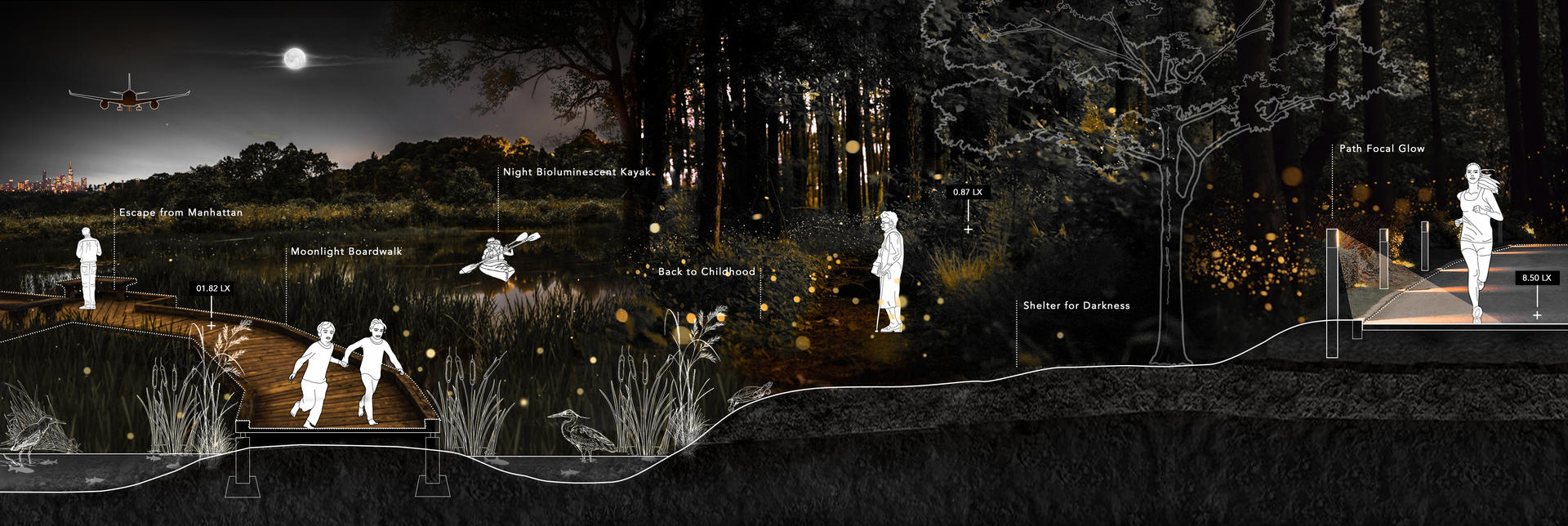
Participate in Darkness in different ways
Understanding Darkness
Night is 50% of the planetary experience. Nighttime visible illumination is strongly tied to progress, human activities and urban structure. As our cities become brighter, they bring huge impacts on ecology and human perception.
Image
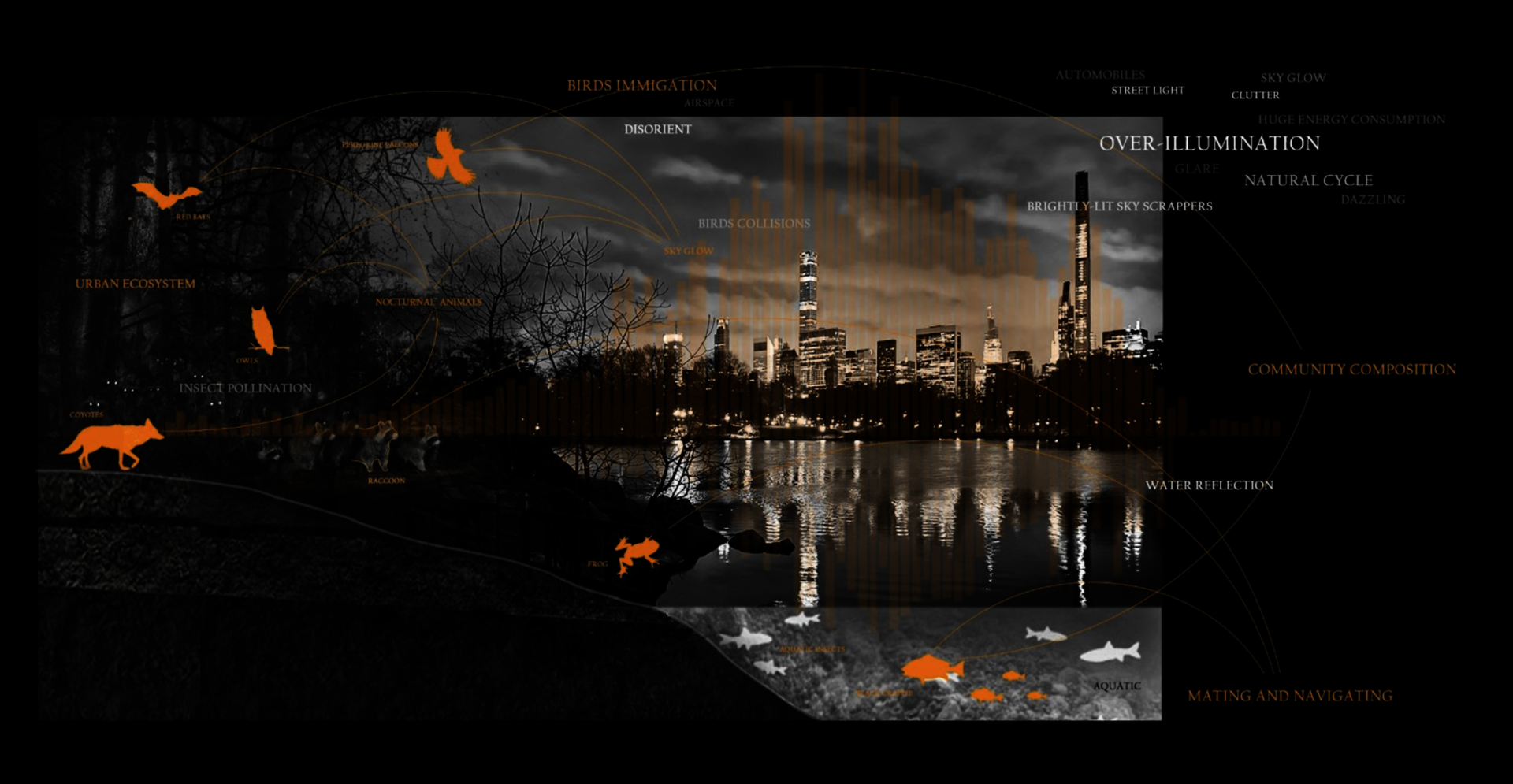
Understanding darkness as something worth pursuing in urban and natural nightscapes.
Modeling Darkness
Darkness is still something worth pursuing in urban nightscapes. This thesis explores the potential of using darkness as the starting point for designing public spaces for use at night, and focuses on the restoration of the ideal habitat for fireflies in the Jamaica bay area, in New York City. The study of the dynamic relationship between light, culture and wildlife can produce a flexible strategy that provides suitable habitats, public realm and cultural programs.
Image
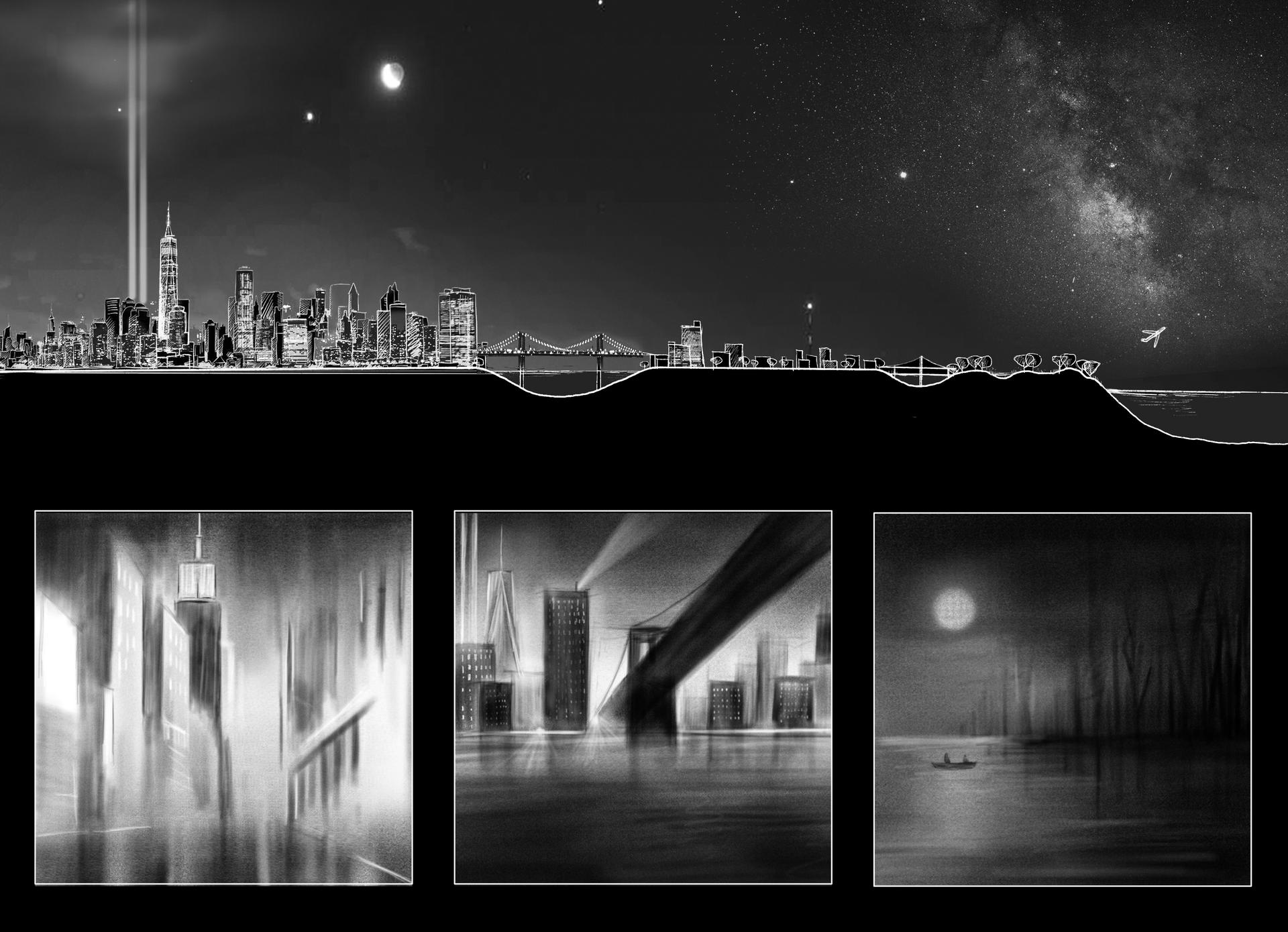
A transect from Manhattan to Jamaica Bay area- Transforming from the highly intensity lighting conditions in manhattan; through east river- which works like a dim gap, to the mixed use area; and finally to the dark zone in Jamaica bay with very dim amount of light.
Participating Darkness
Fireflies were chosen as a representation species in this study. First because of its sensitivity to light; the species can sustain a pilot study. Second, they carry emotional links across different cultures; they are ingrained in childhood memories and nocturnal wandering. Third, they are bioluminescent; working as part of complex landscape light installations can make them a unique component of natural nightscapes on a global scale.
Image
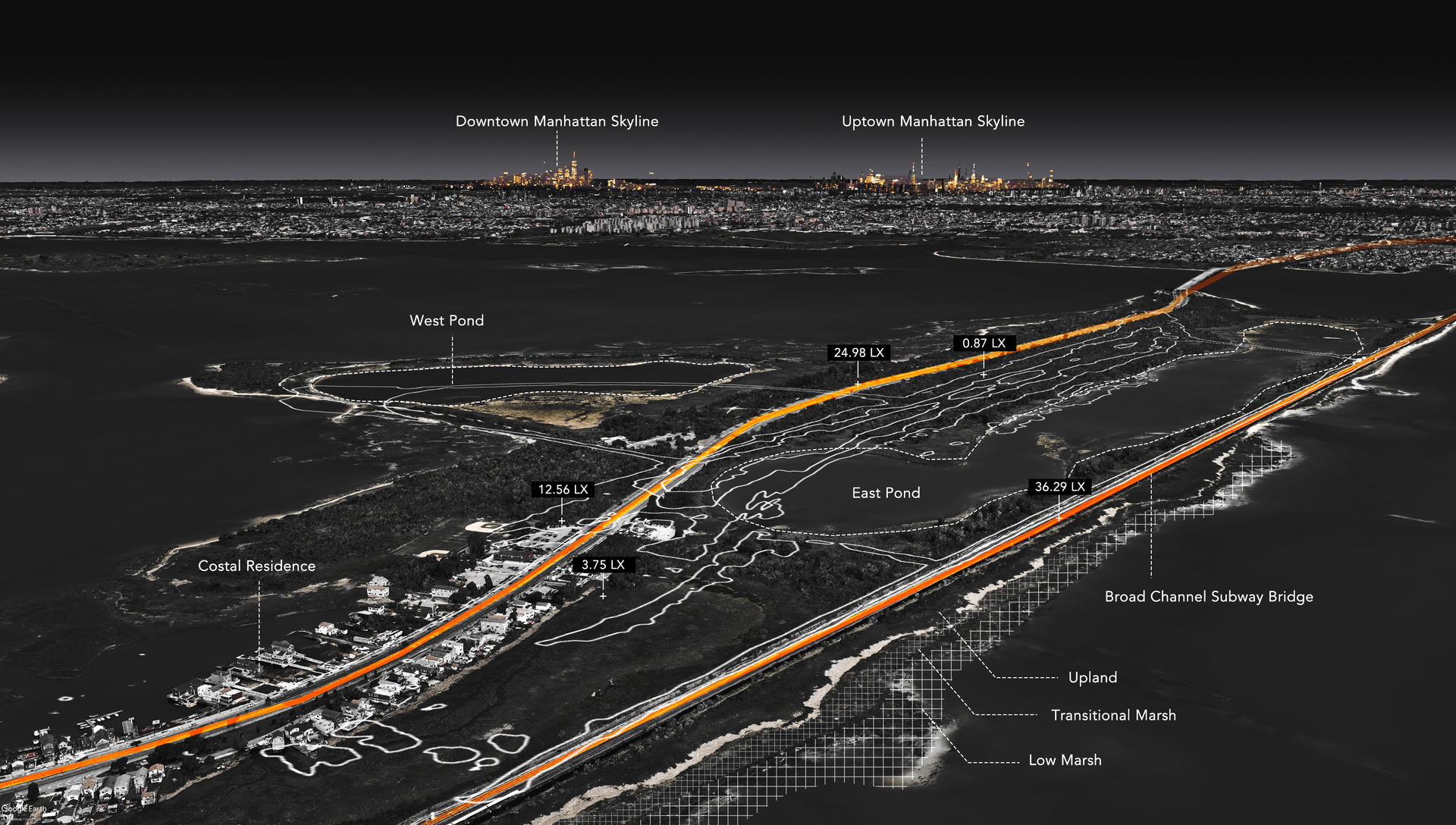
A full measurement of the site’s lighting condition - The lighting conditions and the ecological conditions are suitable for the fireflies. Fortunately, the situations with 0.03fc(1.04LX) low light level for Fireflies really exist in the site
- Architecture
- Ceramics
- Design Engineering
- Digital + Media
- Furniture Design
- Global Arts and Cultures
- Glass
- Graphic Design
- Industrial Design
- Interior Architecture
- Jewelry + Metalsmithing
- Landscape Architecture
- Nature-Culture-Sustainability Studies
- Painting
- Photography
- Printmaking
- Sculpture
- TLAD
- Textiles
